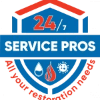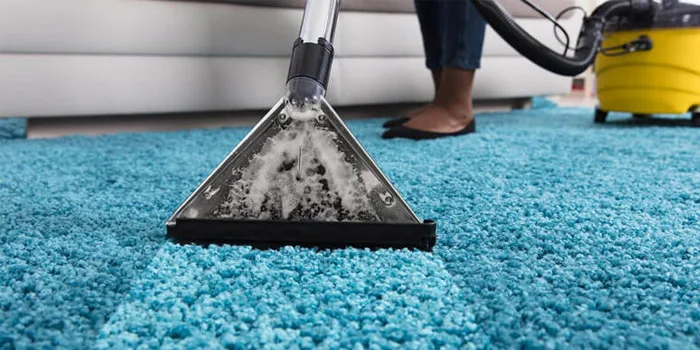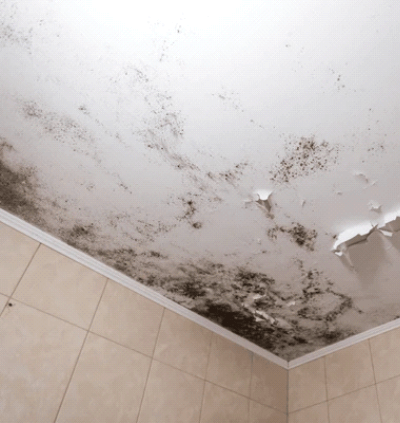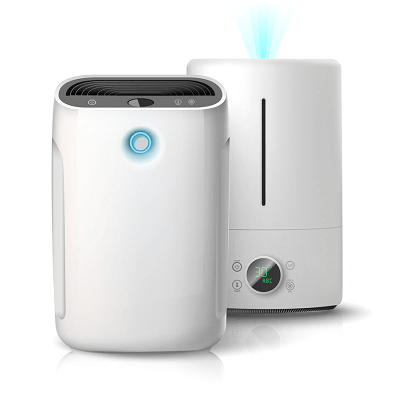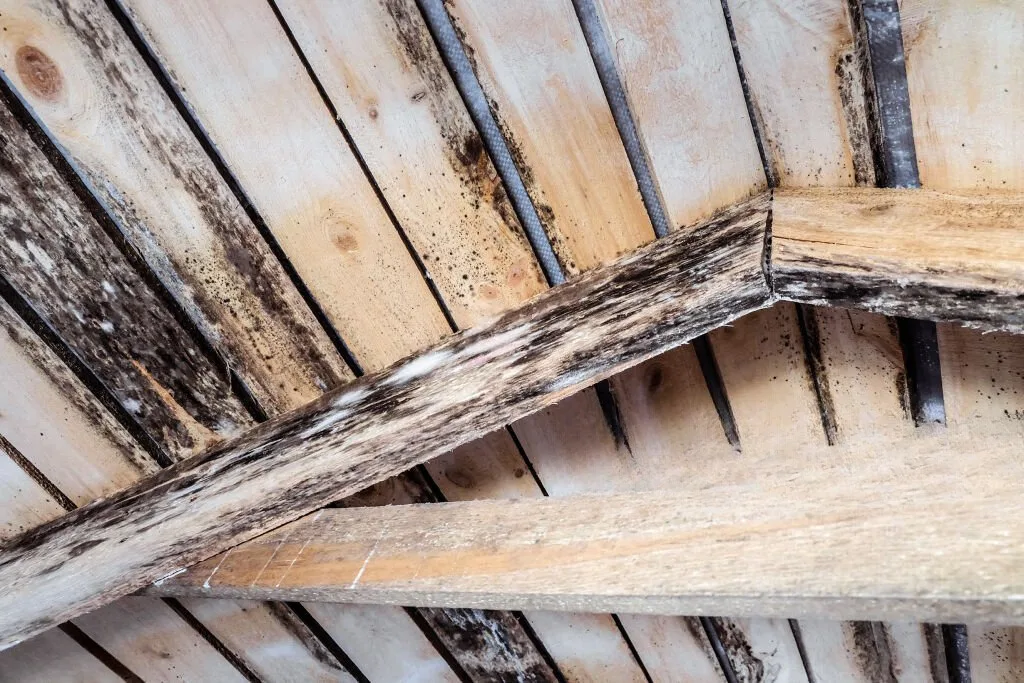
Most folks don’t think about what’s happening up in the attic. But over time, yucky dirt and dust gather up there. Then moisture gets trapped and mold starts growing!
If mold takes over the attic, it will mess things up really badly. The mold could crawl behind walls and into bedrooms too. It would wreck your home’s frame and make the air inside unhealthy to breathe.
Mold is sneaky – it may show up after a big flood too. So watch for its warning signs in the attic before it’s too late. Look for musty smells, dark spots on boards, or fluffy patches.
Don’t let mold spread everywhere! Call our Miami team to clean out your attic and stop moisture problems before they start. We’ll get rid of mold safely so you can keep your home and family safe. Just give us a call to set up an inspection – it’s free!
Key Takeaways
- High humidity, poor ventilation, roof leaks, gaps or openings in the attic, wet objects or clothes, poor insulation, and a lack of maintenance cause mold in the attic.
- Signs of mold in the attic include a strong smell, damp insulation, stains on wood structures and walls, excess condensation, dark spots on the roof, and discoloration of roof sheathing, rafters, fascia boards, and window sills.
- To prevent mold in the attic, control moisture levels, ensure proper insulation, fix cracks and water leaks, and improve ventilation.
- To get rid of mold in the attic, clean visible mold, apply a mold-killing cleaner, clean surrounding areas and objects, scrub off affected areas, ventilate the attic, and run a dehumidifier.
Signs of Attic Mold
Mold in the attic results from high humidity, poor ventilation, and rising temperature. Several signs indicate mildew and fungus growth:
- A strong smell that doesn’t leave no matter how hard you try
- Insulation in the attic becomes damp and moist
- Stains start to appear on wood structures and walls
- Excess condensation on the windows, metal pipes, and glass objects
- Dark spots on the roof start appearing
- Discoloration of roof sheathing, rafters, fascia boards, and window sills
Look out for these signs. If you see them, contact mold removal services without delay.
What are the Causes of Mold in Attic?
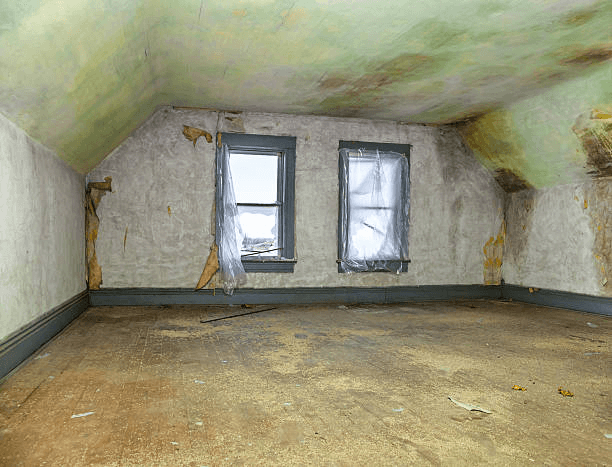
Roof Leaks
Roof leak causes moisture buildup in the attic. Any leakage or burst pipe can also cause flooding in the attic, creating serious water damage problems.
In both cases, mold will start growing and spreading in your attic at a fast rate.
Gaps or Openings
Any gaps that are left in the ceilings, roofs, or floor of the attic will allow dust and air to enter your attic. Any fixtures in your living space might leave a crack in the ceiling, letting moisture in the attic. In summer, the hot air will create an ideal environment for mold in the attic. Seal any gaps, cracks, or fissures to protect your attic.
Poor Ventilation
If all windows or skylights are closed, there’s no way for fresh air to come in. Blocked air vents also cause the same issue. When humid air is trapped inside, it will eventually cause mold growth.
Wet Objects or Clothes
If you put any wet items in your attic, they won’t dry out soon. Because of poor ventilation, all damp objects will increase moisture levels in the attic. This will cause the growth of all sorts of mildew or fungus.
Poor Insulation
Improper insulation can cause a rise in temperature and increase the flow of air. This in turn creates a mildew problem in your attic. If you see any condensation on the roof sheathing, it indicates that the insulation is not installed properly.
In most cases, attics are forgotten places of the house. It’s possible that you might not be able to see potential causes of mold growth. That’s why it’s important to take care of these causes when you build or move to a new house.
How to Prevent Mold in Attic?
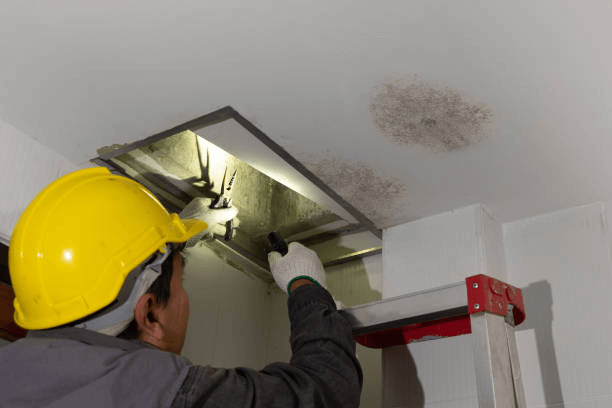
Fixing all causes of mold will prevent mold in the attic. If you know the potential factors for causing mildew and fungus, you should fix them before any mold damage is done. There are a few things to keep in mind when making your house mold-proof. These include:
Moisture Control: The Key to Mold Prevention
One of the primary factors that contribute to mold growth in the attic is excessive moisture. Controlling and monitoring moisture levels is crucial in preventing mold. Here are some tips to help you keep moisture in check:
- Regular Monitoring: Regularly inspect the attic for signs of moisture, such as damp spots, condensation, or musty odors. Use a moisture meter to accurately measure the moisture levels in the attic.
- Proper Ventilation: Ensure that your attic is adequately ventilated to allow for proper air circulation. Proper ventilation helps to prevent the buildup of humid air, which can lead to mold growth. Consider installing vents or fans to improve airflow.
- Address Roof Leaks: Inspect your roof regularly for any signs of leaks. Repair any damaged or missing shingles, and seal any gaps or cracks in the roof. Promptly fix any leaks to prevent water from seeping into the attic.
- Control Indoor Humidity: Keep the humidity levels in your living areas under control. Use dehumidifiers in areas prone to high humidity, such as bathrooms and kitchens. Properly vent appliances that produce moisture, such as dryers and stoves.
Insulation: A Barrier Against Mold
Proper insulation is essential in preventing mold growth in the attic. It helps to regulate temperature and prevent the formation of condensation. Follow these guidelines for effective insulation:
- Check for Gaps: Inspect the attic for any gaps or spaces in the insulation. These gaps can allow warm, moist air to enter the attic, creating an ideal environment for mold growth. Seal any gaps or spaces using appropriate insulation materials.
- Ensure Adequate Insulation: Make sure that your attic is properly insulated according to local building codes and recommendations. Insufficient insulation can lead to temperature fluctuations and condensation, promoting mold growth.
- Consider Vapor Barriers: In areas with high humidity, consider installing vapor barriers between the insulation and the living space. Vapor barriers help to prevent moisture from seeping into the attic.
Fixing Cracks and Leaks: Closing the Door on Mold
Cracks and leaks in the ceiling of your living space can allow hot and moist air to travel to the attic, creating an environment conducive to mold growth. Here’s what you can do to address these issues:
- Inspect for Cracks: Regularly inspect the ceiling of your living space for any cracks or gaps. Pay close attention to areas directly below the attic. Seal any cracks or gaps using appropriate sealants or caulking.
- Address Plumbing Leaks: Check for any leaking pipes in the walls or roofs of your home. These leaks can introduce moisture into the attic, leading to mold growth. Fix any plumbing leaks promptly to prevent further damage.
- Repair Roof Issues: If you notice any roof issues, such as damaged flashing or missing shingles, repair them immediately. A well-maintained roof is crucial in preventing water intrusion and mold growth in the attic.
How To Get Rid of Mold in Attic
Once mold in the attic is spotted, it’s important to kill it promptly. But what’s more important is that you make sure that all causes are eradicated immediately. However, if all of your preventive measures fail, there are a few ways to kill mold in your attic.
Clean Visible Mold
Using a stiff brush, remove all visible mold from the roof sheathing, rafters, joists, and floor of the attic. Be thorough in your cleaning to ensure that all mold is removed.
Apply a Mold Killing Cleaner
Use a mold-killing cleaner, such as diluted vinegar, borax, or hydrogen peroxide, to treat the affected areas. Apply the cleaner using a spray bottle or sponge, ensuring complete coverage. Leave the cleaner on the surface for a few hours or until it’s completely dry.
Clean Surrounding Areas and Objects
Clean the entire attic space with brushes and wipes to make sure that mold spores are removed. Clear out all objects in the attic as they might be infected too. Treat them as per their requirements so that you don’t damage anything.
Scrub off Affected Areas
Once the mold-killing cleaner has dried, use a scrub brush or sponge to scrub the affected areas. This will help to remove any remaining mold spores and stains. Rinse the area with clean water and allow it to dry completely.
Ventilate the Attic
When you begin cleaning the attic, open any windows or skylights in the attic. Proper ventilation will let the spores fly out of the attic and allow you to work more efficiently.
Run a Dehumidifier
After you’re done cleaning the attic and killing the mold, run a dehumidifier with a high capacity. This will remove excess moisture from the air and kill mold.
Fix Leaks, Cracks, and Insulation
Once you have removed mold in the attic, look for the root cause. Fix all cracks in the attic, reinstall the insulation, and improve ventilation.
24/7 Service Pros Can Solve It All!
Dealing with mold is not only dangerous to your health but there are also chances that you might accidentally spread it instead of killing it. Anyone who is not handy and doesn’t have the proper equipment should not be dealing with mold damage. Attics are a tricky place due to their structure and location. Contact 24/7 Service Pros for prevention and remediation of mold.
Frequently Asked Questions (FAQ)
How can I tell if there is mold in my attic?
Signs of mold in the attic include a musty odor, visible mold growth on surfaces, discoloration or staining, and the presence of damp spots or condensation.
Can I remove mold from the attic myself, or should I hire a professional?
Small areas of mold can often be safely removed by homeowners using proper protective gear and following the correct procedures. However, if the mold covers a large area or if you have any concerns about your safety, it’s best to hire a professional mold remediation specialist.
How long does it take to remove mold from the attic?
The time it takes to remove mold from the attic depends on the extent of the mold growth and the size of the affected area. It can range from a few hours to several days.
Can I prevent mold in the attic by using bleach?
While bleach can kill mold on non-porous surfaces, it is not effective in killing mold on porous materials such as wood or insulation. Additionally, bleach can be harmful if not used properly. It’s best to use mold-killing cleaners specifically designed for the type of surface you are treating.
How often should I inspect my attic for mold?
It’s recommended to inspect your attic for mold at least once a year, preferably during the spring or fall when weather conditions can contribute to mold growth. Additionally, if you notice any signs of moisture or musty odors, it’s important to investigate and address the issue promptly.
